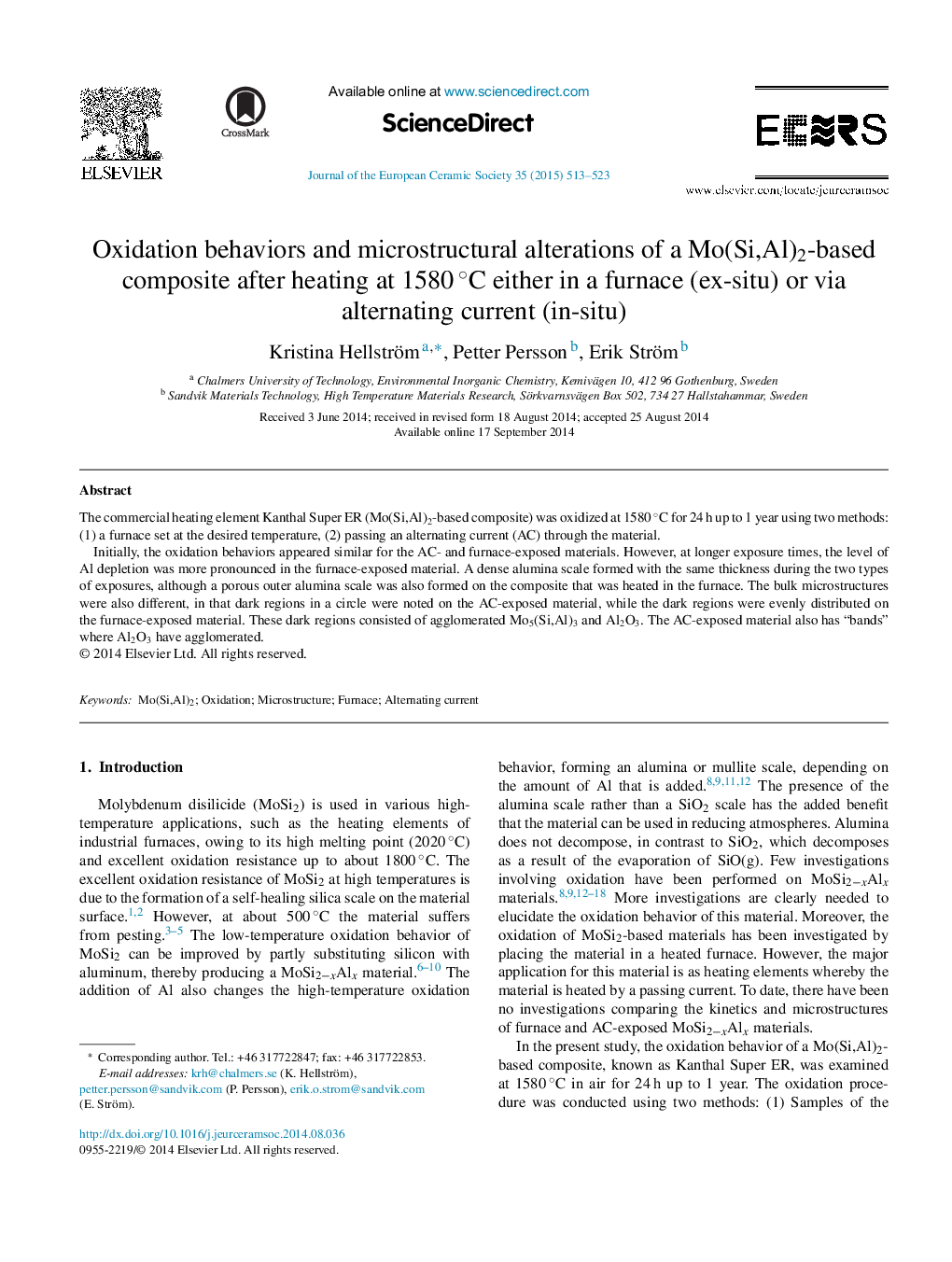| Article ID | Journal | Published Year | Pages | File Type |
|---|---|---|---|---|
| 1474622 | Journal of the European Ceramic Society | 2015 | 11 Pages |
The commercial heating element Kanthal Super ER (Mo(Si,Al)2-based composite) was oxidized at 1580 °C for 24 h up to 1 year using two methods: (1) a furnace set at the desired temperature, (2) passing an alternating current (AC) through the material.Initially, the oxidation behaviors appeared similar for the AC- and furnace-exposed materials. However, at longer exposure times, the level of Al depletion was more pronounced in the furnace-exposed material. A dense alumina scale formed with the same thickness during the two types of exposures, although a porous outer alumina scale was also formed on the composite that was heated in the furnace. The bulk microstructures were also different, in that dark regions in a circle were noted on the AC-exposed material, while the dark regions were evenly distributed on the furnace-exposed material. These dark regions consisted of agglomerated Mo5(Si,Al)3 and Al2O3. The AC-exposed material also has “bands” where Al2O3 have agglomerated.
